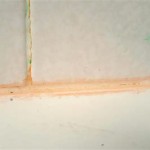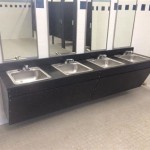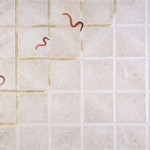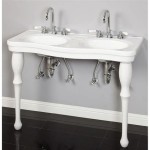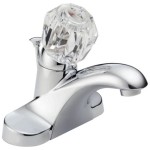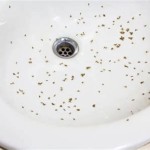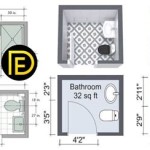How To Change Your Bathroom Vanity and Sink
Updating a bathroom vanity and sink can significantly enhance the aesthetics and functionality of the space. Whether you are looking to modernize the room, increase storage, or simply replace a worn-out fixture, this project is achievable for many homeowners with basic plumbing and carpentry skills. This article provides a comprehensive guide to changing a bathroom vanity and sink, outlining the necessary steps, tools, and considerations for a successful installation.
Before commencing any work, safety precautions are paramount. It is crucial to turn off the water supply to the bathroom at the main shut-off valve or the individual shut-off valves located under the sink. This will prevent accidental flooding during the disconnection and reconnection of plumbing lines. Additionally, wearing safety glasses and gloves is recommended to protect against debris and potential irritants.
Preparing for the Vanity and Sink Replacement
The initial phase involves meticulous planning and preparation. Accurate measurements of the existing vanity space are crucial for selecting a suitable replacement. Measure the width, depth, and height of the current vanity, paying close attention to any obstructions, such as pipes or architectural features. When selecting a new vanity, consider the style, size, and storage capacity that best meet your needs and preferences. Take into consideration the type of sink you want with your new vanity. Undermount, drop-in, and vessel sinks all have different installation requirements.
Once the new vanity and sink have been chosen, gather the necessary tools and materials. Essential tools include a wrench, adjustable pliers, a screwdriver (both Phillips head and flathead), a utility knife, a level, a measuring tape, a drill with various drill bits, a reciprocating saw (optional, for cutting around pipes), a caulk gun, and a shop vacuum. Necessary materials comprise the new vanity and sink, plumbing fittings (such as supply lines, P-trap, and drain tailpiece), plumbers putty, silicone caulk, shims, and possibly wood screws.
Clear the workspace thoroughly. Remove all items from the existing vanity and surrounding areas. Cover the floor with a protective material, such as a drop cloth or cardboard, to prevent scratches or damage. Adequate lighting is essential for clear visibility throughout the project. A work light can be particularly helpful for illuminating tight spaces.
Removing the Existing Vanity and Sink
Begin by disconnecting the water supply lines from the faucet. Place a bucket underneath the shut-off valves to catch any residual water. Use a wrench to loosen the supply line connections and carefully detach them from the faucet tailpieces. If the shut-off valves are old or corroded, consider replacing them at this time to ensure reliable water shut-off in the future.
Next, disconnect the drainpipe. Loosen the slip nuts connecting the P-trap to the sink drain and the drainpipe extending into the wall. Have a bucket ready to catch any water trapped in the P-trap. Once the drainpipe is disconnected, carefully remove the old faucet from the sink. Depending on the faucet type, this may involve loosening nuts and screws from underneath the sink.
With the plumbing disconnected, the vanity can be detached from the wall. Inspect the vanity for any screws or fasteners securing it to the wall studs. These are typically located along the top and bottom edges of the vanity. Remove any screws or nails using a screwdriver or drill. If the vanity is also adhered to the wall with caulk, use a utility knife to carefully score along the edges to break the seal. Gently rock the vanity back and forth to loosen it from the wall. If it is particularly stubborn, use a pry bar, being careful not to damage the wall. Once the vanity is free, carefully lift it out of place and dispose of it properly.
After removing the old vanity, thoroughly clean the area. Remove any remaining caulk, adhesive, or debris from the wall and floor. Repair any minor damage to the wall, such as nail holes or scratches, with spackle or patching compound. Apply a fresh coat of paint to the wall if necessary. Locate the wall studs using a stud finder, as these will be crucial for securing the new vanity.
Installing the New Vanity and Sink
Position the new vanity in its designated location. Use shims underneath the vanity to level it properly. A level should be placed on the top surface of the vanity to ensure it is perfectly horizontal. Once the vanity is level, secure it to the wall studs using wood screws. Drill pilot holes through the vanity frame and into the studs before driving in the screws. This will prevent the wood from splitting. Ensure the screws are long enough to penetrate the studs securely.
With the vanity securely in place, the sink can be installed. Before placing the sink into the vanity, apply a bead of plumbers putty around the drain opening on the sink. This will create a watertight seal. Carefully position the sink into the opening in the vanity countertop. From underneath the sink, attach the drain flange and tighten the nut to secure the drain assembly. Remove any excess plumbers putty with a damp cloth.
Install the faucet according to the manufacturer's instructions. This typically involves inserting the faucet tailpieces through the holes in the sink and securing them with nuts and washers from underneath. Connect the water supply lines to the faucet tailpieces. Ensure the connections are tight to prevent leaks. Use Teflon tape on the threads of the supply line connections to further enhance the seal.
Assemble the drainpipe. Connect the P-trap to the sink drain and the drainpipe extending into the wall. Ensure all connections are tight. It might be necessary to cut the tailpiece or the drainpipe with a pipe cutter to achieve the correct length and alignment. Install a new escutcheon plate around the drainpipe where it enters the wall for a cleaner appearance.
Final Adjustments and Finishing Touches
Turn on the water supply gradually, first checking for leaks at the supply line connections. If any leaks are detected, tighten the connections further. Similarly, check for leaks at the drainpipe connections. If leaks persist, disassemble the connections and reapply plumbers putty or Teflon tape. Allow the water to run for a few minutes to flush out any debris from the plumbing lines.
Apply a bead of silicone caulk around the perimeter of the vanity where it meets the wall and the floor. This will seal any gaps and prevent water damage. Smooth the caulk with a wet finger or a caulk smoothing tool for a clean, professional finish. Wipe away any excess caulk with a damp cloth.
Install any cabinet doors or drawers that were removed during the installation process. Adjust the hinges or drawer slides as necessary to ensure proper alignment and smooth operation. Install any hardware, such as knobs or pulls, on the doors and drawers. Clean the vanity and sink thoroughly with a mild detergent and water. Inspect the entire installation for any imperfections or areas that require further attention.
As a final step, properly dispose of all packaging materials and debris. Clean the work area thoroughly, ensuring that no tools or materials are left behind. The new bathroom vanity and sink are now ready for use.

How To Install A Bathroom Vanity And Sink



Replace Vanity Top And Faucet Diy Network

How To Remove A Bathroom Vanity Budget Dumpster

How To Remove A Bathroom Vanity Remodel

How To Remove Replace A Vanity Top Easy Bathroom Sink Remodel

How To Install Or Remove A Bathroom Vanity Homeserve Usa

How To Replace A Bathroom Vanity The Handyman

How To Install A Vanity Forbes Home
Related Posts
